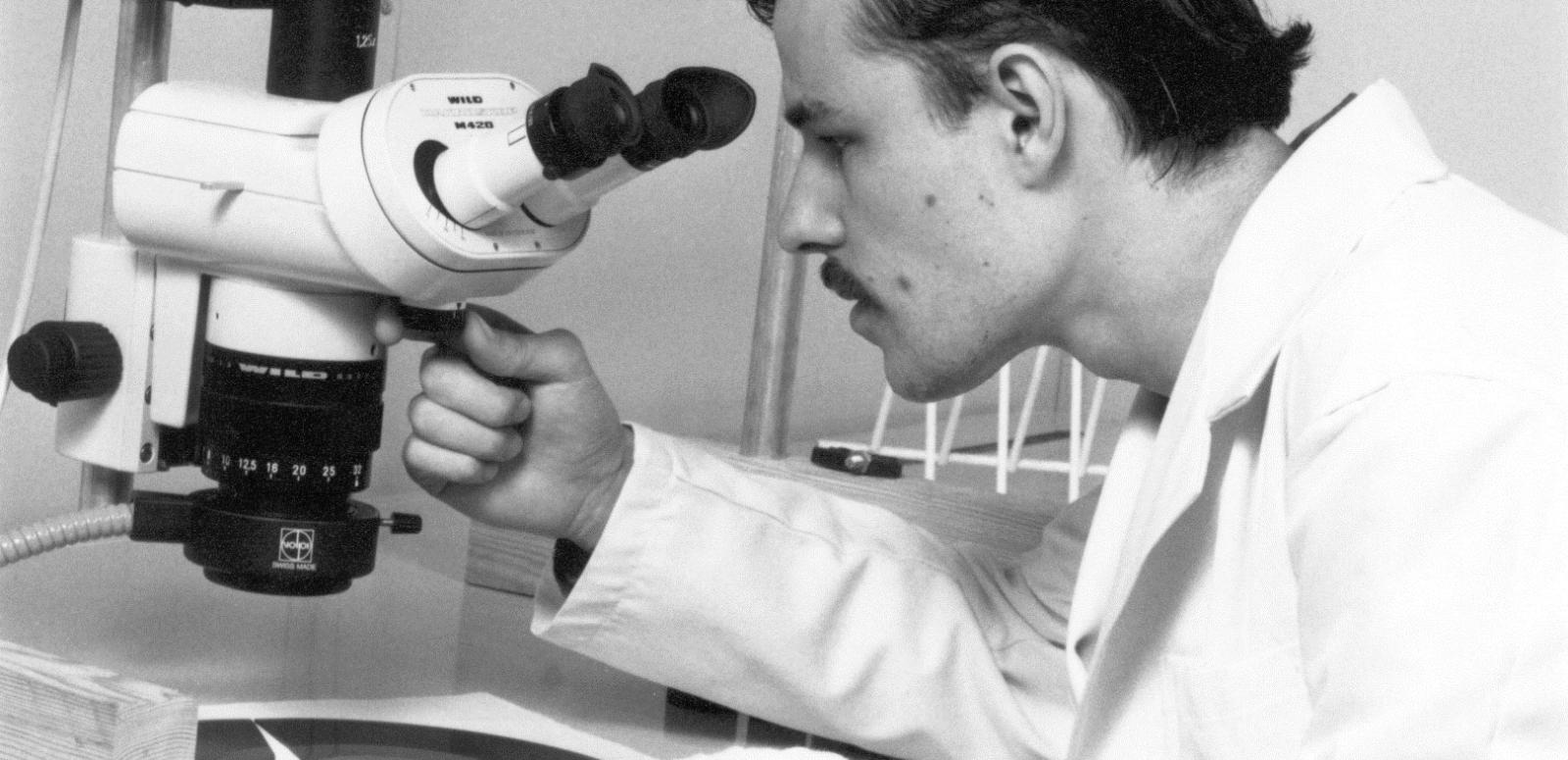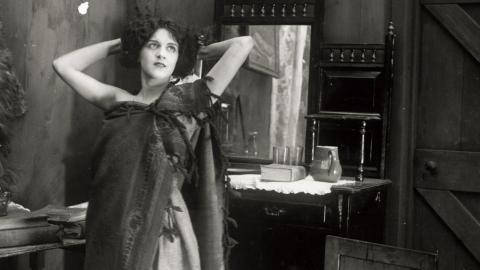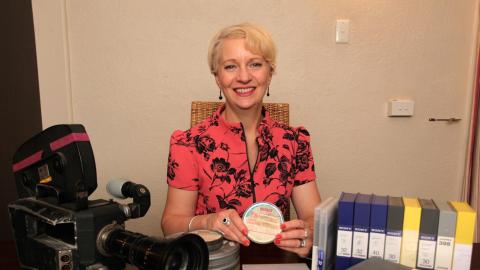

30 years and counting

At the time the 20 or so freshly-minted NFSA staff, under the stewardship of Ray Edmondson, moved into their new building in October 1984, it ‘still smelt like rabbits’ says Ian Gilmour, Manager of Engineering and Research at the NFSA.
The former Institute for Anatomy building still housed laboratories used by the Commonwealth Health Department. ‘They were still breeding rabbits downstairs to test the pharmaceuticals’, he says. ‘Conditions weren’t ideal.’
Prior to joining the then Commonwealth National Library – parent of today’s National Library of Australia – as a graduate public servant, Gilmour had been studying to become a musician. However ‘it didn’t pay terribly well’, so he joined the Library’s Music and Sound Recordings section, working under sound recording collector Peter Burgis whilst continuing his studies in Applied Science, which encompassed physics, chemistry and engineering.

Persistent lobbying by the Music and Sound team – the so-called ‘new kids on the block’ – supported by a large collection built by the dedicated staff had led to the creation of their own, albeit under-resourced, section. ‘It was the only way [the Library] knew they could shut these guys up’, says Gilmour. The library’s collection of books and serials had ‘masses of people and floor space dedicated to it’. Their office, he says, ‘was literally carved out of a set of book stacks on the 4th floor.’
The announcement in Parliament that the government would establish an autonomous National Film and Sound Archive was made by Barry Cohen, Minister for Home Affairs and Environment, on 5 April, 1984. By this stage, Gilmour’s practical skills in chemistry had seen him transfer to the library’s Conservation department where he worked as a conservator repairing old tapes, necessitating his having to apply for his position at the NFSA as a Clerk.
‘[After the announcement] there was certain sense of elation among the National Film Archive and Sound recording staff’ he says, ‘mitigated by the knowledge that we’d taken on a pretty huge job and the realisation we’d have to make a go of it now – there was nowhere else to hide’.
The mad scramble
Janine Boyd, now the NFSA’s Manager of Collection Operations, recalls ‘a buzz of excitement and anticipation among staff – the film archive collection would be able to get the attention it required rather than simply as an addendum to the book collection.’
‘The early days were great’ she says, ‘as most of the staff were around the same age – all eager and keen to be involved in the work. Heaps of enthusiasm and optimism, unfettered by the strictures of a large lumbering organisation.’

‘We were hopeful for better resourcing, better focus and independence to develop in more appropriate ways. For myself I really just wanted to be able to fulfil the promises made to donors when they gave us their footage – [however] … it took a lot longer to build up the infrastructure to enable the work to develop further.’
Creating an entirely new organisation wasn’t without its difficulties. ‘In the early days I don’t think there was a sense of a united archive’, says Boyd. ‘There was film and sound getting on with business but being two separate parts of the whole. I left in 1988 on maternity leave and came back in 1999 and there was no longer that dichotomy. There was a much stronger sense of who we were and what role we played within the broader national collecting institutions arena.’
Boyd started with the National Film Archive in 1983 as the Canberra-based Last Film Search Officer.
‘The Last Film Search was a project launched by the Library to try to find all the old nitrate film that may have been languishing in old cinemas or sheds or under people’s houses or beds. There was a bloke in a caravan (Michael Cordell) who travelled around Australia visiting country towns, digging up all the old footage he could find. I was the clerical part of the team processing the acquisitions and organising for any copies in exchange. It was almost too successful as we received more film than we could process and a large backlog was created.’
Catching up on the backlog was a priority for the new NFSA Sound team as well. Gilmour recalls the ‘mad scramble’ that had begun in the 1970s and 80s ‘to ramp up a collection hitherto stored in chook sheds’ of scarce early recordings, radio material and retrospective material.
A big old empty building
There were no labs or studios in the NFSA’s new premises, ‘just a big old empty building’ says Gilmour. Having not inherited any of the sound equipment from the library other than the turntables, the initial work of the Sound section involved setting up studios from scratch alongside a full refurbishment of the building.
But the new physical space meant scope for discovery and an opportunity for additional funding that first expanded the film labs and later the creation of custom-built sound studios for work on preservation objects such as rare and fragile acetate discs dating back to the 1930s.
Over the past 30 years, Boyd has seen the audiovisual archiving profession thrive. ‘Thirty years ago there was no identifiable audiovisual archiving profession as such and although we were in contact with our colleagues overseas through such organisations as NZFA [New Zealand Film Archive], FIAF [International Federation of Film Archives], BFI [British Film Institute] and the [US] Library of Congress, obviously nowadays there is a much more free, more immediate flow of information and sharing of ideas … things have changed radically in the last 30 years. The collection has grown exponentially and will continue to do so with the tsunami of digital content.’
‘Nowadays it’s all about digital. [Digital] has solved more problems than it’s created’, agrees Gilmour.
‘One thing that hasn’t changed so much is of course the enthusiasm for the collection and although some days can be a bit of a drudge there are other days when we can’t believe how lucky we are to work here.’
Barry Cohen, Minister for Home Affairs in 1984, interviewed by James McCarthy (2008), Oral History, NFSA title: 773849. He talks about the persistence of Ray Edmondson and the genesis of an autonomous NFSA.
The National Film and Sound Archive of Australia acknowledges Australia’s Aboriginal and Torres Strait Islander peoples as the Traditional Custodians of the land on which we work and live and gives respect to their Elders both past and present.


